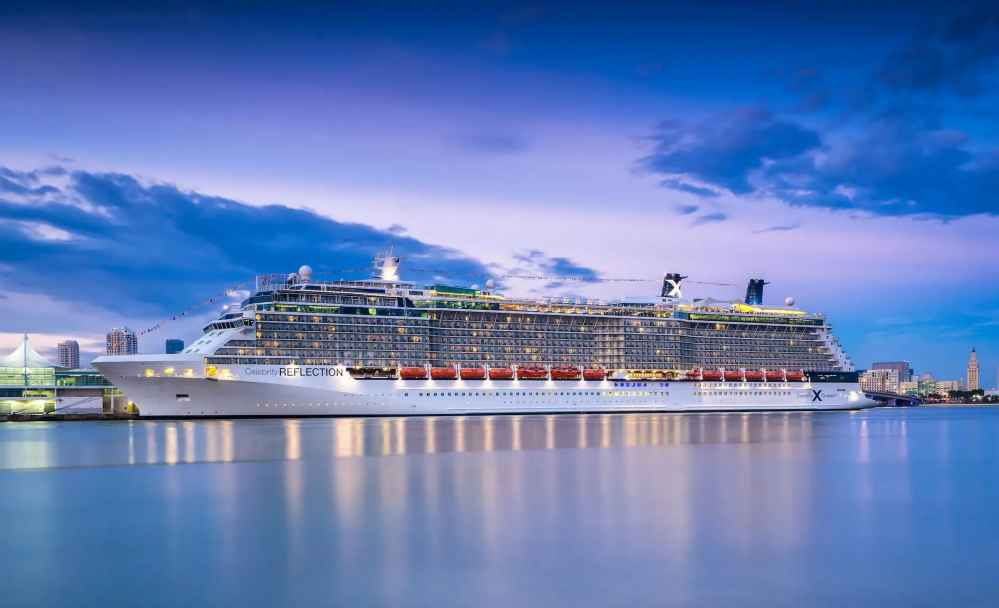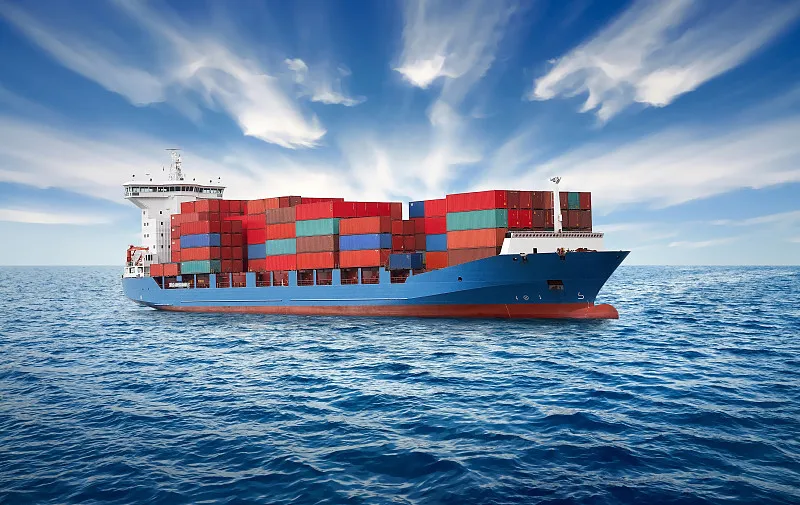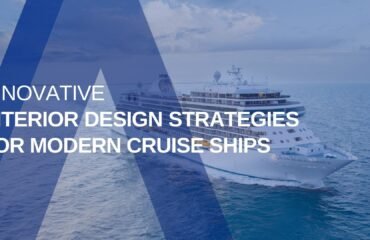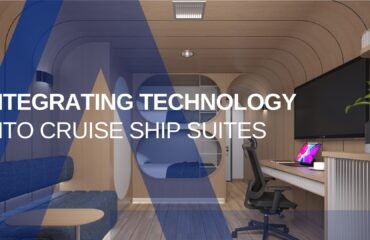The differences between cargo ships and cruise ships may seem obvious, yet these contrasts extend far beyond their core functions — transporting goods versus providing luxurious travel experiences.
Although they may appear similar in scale, their designs, interior features, and safety systems are entirely different. Moreover, the challenges they face at sea vary greatly.
This guide explores what truly distinguishes these two giants of modern maritime engineering.
Purpose and Function
One of the most fundamental differences between the two types of vessels is that they are built for completely different purposes.Cruise ships are designed to transport passengers in comfort and style, offering a premium leisure experience at sea.
Cargo ships, on the other hand, are engineered to carry goods and materials safely and efficiently from one destination to another. To better understand how they differ in purpose and function, let’s look at each in detail.
Cargo Ships

Also known as freight or container ships, cargo vessels are massive ocean-going machines that transport manufactured goods, raw materials, and even fuel across global trade routes.
Given their critical role in logistics, they are widely considered the backbone of international commerce.
Their primary objective is simple: to move large volumes of cargo safely, efficiently, and on schedule across the oceans. Depending on the assignment, cargo ships can carry almost any type of load imaginable.
Container ships carry standardized metal containers filled with goods, while bulk carriers transport raw materials such as grain, coal, timber, chemicals, plastics, and metal ores.
Tankers are specialized cargo ships built to carry liquids — including crude and refined oil, liquid chemicals, and liquefied natural gas (LNG), the same eco-friendly fuel used by modern cruise ships like Icon of the Seas.
Much like freight trucks on land, cargo ships operate under strict schedules, ensuring global supply chains remain uninterrupted.
Their voyages are meticulously planned, and crews are highly trained to manage long periods at sea and demanding operational conditions. In addition to being robust and efficient, their operations require precise coordination with loading and unloading ports to optimize timing and safety.
Cruise Ships

Cruise ships, in contrast, serve a much less utilitarian purpose. Their primary focus is the leisure and tourism industry — providing guests with a luxurious and immersive vacation experience on the water.
Rather than transporting goods, cruise ships carry thousands of passengers across the seas, offering comfort, relaxation, entertainment, and indulgence.
Essentially, a cruise ship functions like a floating resort, but with the unique advantage of ever-changing scenery and the opportunity to visit multiple destinations on one journey.
Passengers book cruises to explore exciting locations while enjoying onboard amenities such as restaurants, theaters, casinos, gyms, spas, pools, and countless entertainment venues. Cruise itineraries are carefully designed to combine breathtaking sea routes with multiple port visits, offering both adventure and luxury.
Life for the crew, however, is far more functional. Crew members typically live in shared cabins with bunk beds and modest facilities like lounges and televisions.
Yet, modern cruise ships offer Wi-Fi, gyms, and pools for the crew’s use during off-hours — making life at sea considerably more comfortable compared to cargo ship crews.
Design and Structure
To fulfill their vastly different roles, cargo ships and cruise ships are built according to completely different design philosophies. Let’s start with cargo ships.
Cargo Ship Design

Cargo ships are engineered for utility and endurance. They have box-like profiles, extremely wide hulls, and flat decks — maximizing cargo space while maintaining stability when carrying heavy loads. This width also helps secure cargo during rough seas and high waves.
Their hulls are reinforced with thick steel to withstand the world’s harshest maritime conditions. To minimize drag and increase fuel efficiency, cargo ships feature a bulbous bow — a rounded extension at the front of the hull that reduces water resistance, improving propulsion efficiency by up to 20%.
The bridge, where navigation and communications are managed, is usually located toward the stern (rear) of the vessel. This configuration both maximizes cargo space and provides officers with an unobstructed view over the deck.
Cargo ships vary significantly in size — from small coastal vessels to mega-ships like MSC Irina, classified as an Ultra Large Container Ship (ULCS) with a gross tonnage of 236,184 GT.
By comparison, the world’s largest cruise ship, Icon of the Seas, measures 248,663 GT — proving that the gap between these giants is smaller than many expect.
Most cargo ships today are built in Asia. China, South Korea, and Japan together account for over 85 percent of the world’s shipbuilding output. Regardless of size, every cargo ship is designed to maximize space, reduce operating costs, and maintain fuel efficiency. They typically travel at speeds of 15–25 knots — balancing stability, economy, and on-time delivery.
Cruise Ship Design

Cruise ships, by contrast, prioritize passenger comfort, safety, and aesthetics. They feature multi-deck superstructures filled with open spaces, balconies, sun decks, pools, and outdoor attractions like water parks. Modern cruise ships are built with streamlined, hydrodynamic hulls to reduce drag, enhance stability, and deliver smooth voyages.
To minimize motion at sea, cruise ships maintain an average cruising speed of 21–23 knots and use active stabilizer systems that counteract rolling. The size and internal layout depend on the destinations served, passenger capacity, and the cruise line’s preferences for onboard facilities.
The bridge is generally located near the bow (front), while accommodation, restaurants, and entertainment venues are integrated throughout the ship.
Planning such layouts is a highly complex process, requiring the early integration of cabins, restaurants, theaters, and even roller coasters on some next-generation ships.
Cruise ships range from small expedition vessels like Celebrity Xploration to mega-liners such as Royal Caribbean’s Icon of the Seas, weighing nearly 250,000 GT.
Life Onboard
Crew Experience on Cargo Ships
Life on a cargo ship is far from glamorous. These vessels are designed for practicality and function, not comfort. Still, living quarters and common areas are reasonably equipped — particularly on long-haul voyages that can last up to 50 days at sea. An average crew numbers between 20 and 30 people, though smaller ships may operate with fewer than 10.
When off-duty, crew members rest in private or shared cabins located below the bridge, or gather in common spaces such as the galley or mess hall. Larger vessels may also feature laundry rooms, infirmaries, small gyms, recreation lounges, or areas equipped with table tennis and foosball tables. Most modern cargo ships now offer satellite internet, enabling crew members to stay connected with their families.
Despite improving conditions, life on a cargo ship can be repetitive and isolating. Crew typically work in shifts and take extended leave between voyages to recover. Daily life revolves around maintaining schedules, monitoring cargo safety, and ensuring vessel performance.
Cruise Ship Passenger Experience
Cruise passengers enjoy a completely different world at sea. Onboard life is designed to be luxurious, entertaining, and immersive — much like visiting a five-star resort. Guests can enjoy spas, casinos, theaters, restaurants, and live concerts, all while traveling between destinations. Each cruise ship offers a unique mix of dining and entertainment options to ensure passengers remain engaged and relaxed throughout their voyage.
Cabins range from modest staterooms to extravagant penthouse suites featuring private balconies, panoramic views, and personal jacuzzis. Cruise lines fill daily schedules with live shows, culinary workshops, sports activities, and social events — allowing every guest to customize their experience. The result is a dynamic, multi-sensory environment that caters to a wide variety of interests and lifestyles.
Safety Features
Both cargo and cruise ships are built to exceptionally high safety standards, yet their systems differ according to function.
Cargo Ship Safety
Safety is paramount on all vessels, but cargo ships face unique challenges due to their immense weight, high-value cargo, and exposure to harsh conditions. They must withstand rough seas, collisions with floating objects or ice, and even piracy in high-risk regions.
Wide hulls enhance stability in heavy weather, while reinforced steel structures prevent capsizing or hull damage.
Modern cargo ships are equipped with advanced technologies such as radar, GPS, satellite communications, and the Automatic Identification System (AIS).
In piracy-prone waters, vessels employ trained security teams, razor wire, and defensive systems to protect crew and cargo.
For emergencies, cargo ships carry multiple lifeboats and inflatable life rafts. Crew members undergo regular safety drills and training updates to ensure rapid response under all conditions.
Cruise Ship Safety
Cruise ships operate under some of the strictest safety protocols in the world. Every passenger must participate in mandatory safety drills, learning evacuation routes and life-vest procedures before departure. Ships carry more than enough lifeboats and inflatable rafts for all guests and crew.
For instance, Royal Caribbean’s Oasis-class ships — such as Oasis of the Seas — are equipped with 18 lifeboats, each accommodating 370 people, plus over 100 inflatable rafts. Onboard facilities also include fully staffed medical centers, fire-detection and suppression systems, and comprehensive CCTV monitoring to prevent accidents and overboard incidents.
All crew receive extensive emergency training, and international organizations like the International Maritime Organization (IMO) strictly enforce compliance with global safety standards.
Challenges
While both ship types share the risks of navigating open seas, each faces unique operational obstacles.
Cargo Ship Challenges
As mentioned earlier, piracy remains a serious concern in certain regions, including the Gulf of Aden, the Red Sea, the South China Sea, and the Gulf of Oman. To mitigate these threats, cargo companies invest heavily in security measures and crew training.
Severe weather is another major challenge — storms and heavy swells can endanger crew and unsecured cargo, causing costly delays. Additionally, crowded ports present logistical issues such as customs clearance, berth scheduling, and load-management coordination, all of which require flawless precision to keep global trade running smoothly.
Cruise Ship Challenges
Cruise lines face the enormous task of keeping thousands of guests safe, satisfied, and entertained simultaneously. The logistics of storing sufficient food, fresh water, and fuel — while managing waste responsibly — are incredibly complex. For example, the Viking Orion, a relatively small ship carrying 930 guests, consumes about 5,000 eggs and 4,000 cups of coffee per day. Larger ships like Symphony of the Seas, which hosts over 6,000 passengers, prepare nearly 30,000 meals daily.
Cruise itineraries that include multiple countries and ports demand precise timing and extensive planning. Crew must ensure all guests enjoy a seamless, memorable vacation — while maintaining punctuality and safety at every stop.
Tightening environmental regulations have also introduced new challenges. Cruise lines are under growing pressure to reduce waste, emissions, and overall carbon footprint.
A single day of cruising can generate between 700 and 1,000 pounds of CO₂ emissions per passenger, prompting the industry to innovate cleaner technologies and fuels. Furthermore, large gatherings of people pose public-health risks — a reality made evident during the COVID-19 pandemic.
Traveling on a Cargo Ship
Although it may sound unconventional, traveling aboard a cargo ship has gained popularity in recent years. To diversify revenue streams, some cargo operators have started offering limited passenger cabins — a minimalist alternative to traditional cruising. Often referred to as “freighter travel”, these voyages allow travelers to explore the world’s oceans on a budget.
Passengers typically stay in small, functional cabins, sometimes shared, and dine with the crew in the same mess hall. Some ships even provide simple passenger amenities like lounges or sun decks, though this varies by vessel. Because these ships already follow fixed trade routes, such travel is considered a cost-effective and eco-friendly alternative to conventional cruising. However, travelers should expect a practical experience focused on utility rather than luxury.
Cargo ships and cruise ships serve very different purposes and are engineered accordingly, yet both remain essential to the modern maritime world. Cargo ships are dedicated to the efficient and reliable movement of goods, while cruise ships focus on delivering comfort, leisure, and adventure to passengers. Each has evolved to meet the unique demands of its sector, reflecting how far ship design and ocean travel have come since their humble beginnings. Together, they illustrate the diversity and sophistication of today’s global maritime industry.




